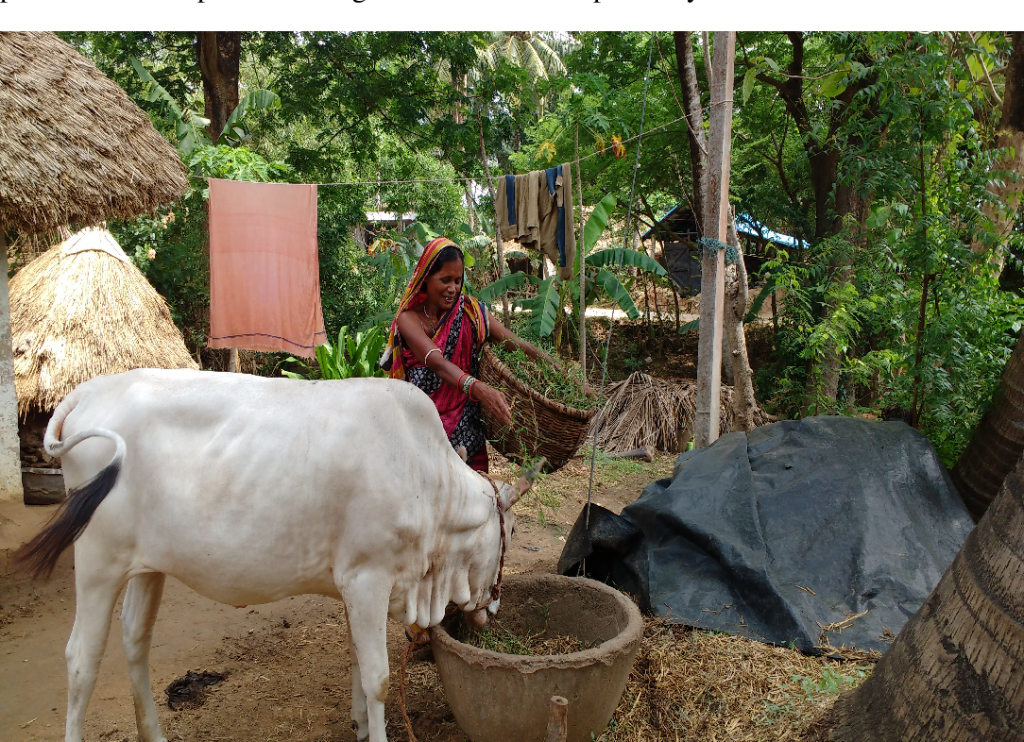Kendrapara: All eyes are set on the 21st Domestic Animal and Bird Census, scheduled for February this year, to know if the downward trend of livestock population in Kendrapara district has stabilised in the last five years following initiatives by both the central and state governments to increase bovine population.
According to reports, livestock population in the district, which was severely impacted by the 1999 Super Cyclone, witnessed a sharp decline in the next 19 years following the natural disaster.
According to the statistics compiled by the district Animal Husbandry Department, the livestock count stood at 924,590 in 2000. The figures came down to 3,13,715 in the 2019 census – recording a 66 per cent drop. Researchers attributed the primary cause of the decline to climate change, which has also adversely affected the district’s economy and environment.
Khitish Kumar Singh, a lecturer who is conducting research on the issue, said that changing weather patterns have exacerbated coastal erosion in the district. “Since 1960, the sea has advanced about 12 kilometres inland, submerging significant land areas. By 2000, Kanpur village and many areas under Satabhaya panchayat were in the district’s revenue map. However, they have now disappeared due to coastal erosion for which all residents have been forced to relocate,” he said.
He said villages in about 28 kilometres of coast (of the district’s 48-kilometre coastline) have been swallowed by the sea, resulting in the loss of agricultural land and housing. “This has made livestock farming increasingly unviable,” he pointed out.
Deviprasad Sahu, a Zoology Professor, maintained that groundwater salinity in the district’s coastal regions has risen, further reducing the availability of green fodder for livestock. “Shrinking of pasture land has also led to a decrease in livestock population. Additionally, prawn cultivation has encroached on traditional pasture lands, leaving little room for sustainable livestock rearing,” Sahu said.
The decline in cattle and buffalo populations is primarily attributed to the lack of grazing land, according to environmentalist Hemant Kumar Rout. He stated that of the 3,21,934 families in the district, 3,05,868 rural families rely on livestock as a major source of livelihood. “These families not only meet a portion of their economic needs through livestock but also use animal waste to fertilize their farmlands, and as a natural pesticide, contributing to ecological balance,” he said.
He said that while the 1999 Super Cyclone severely impacted livestock populations, unregulated construction of illegal prawn gheries in its aftermath has rendered grazing and farmland saline. “Despite efforts by both Central and state governments, departmental officials are not paying adequate attention to the drop in livestock numbers,” he added.
Pramila Mallik of Tantiapala observed that in agrarian Kendrapara district, cattle and buffaloes play a crucial role not just in farming but also in dairy production. “However, pasture lands are increasingly being encroached upon as milk and milk-based products are coming from outside the district. The saline climate is unsuitable for crossbred cows, leading to higher mortality during rearing. These factors collectively contribute to the reduction in livestock numbers,” she said.
Meanwhile, when contacted, ADVO Mrutyunjay Mohanty said that the 21st Livestock Census will continue till February end. “Both the Central and state government initiatives aim to increase cattle and buffalo populations. The final census report will reveal the outcomes of these efforts,” he added.
PNN
